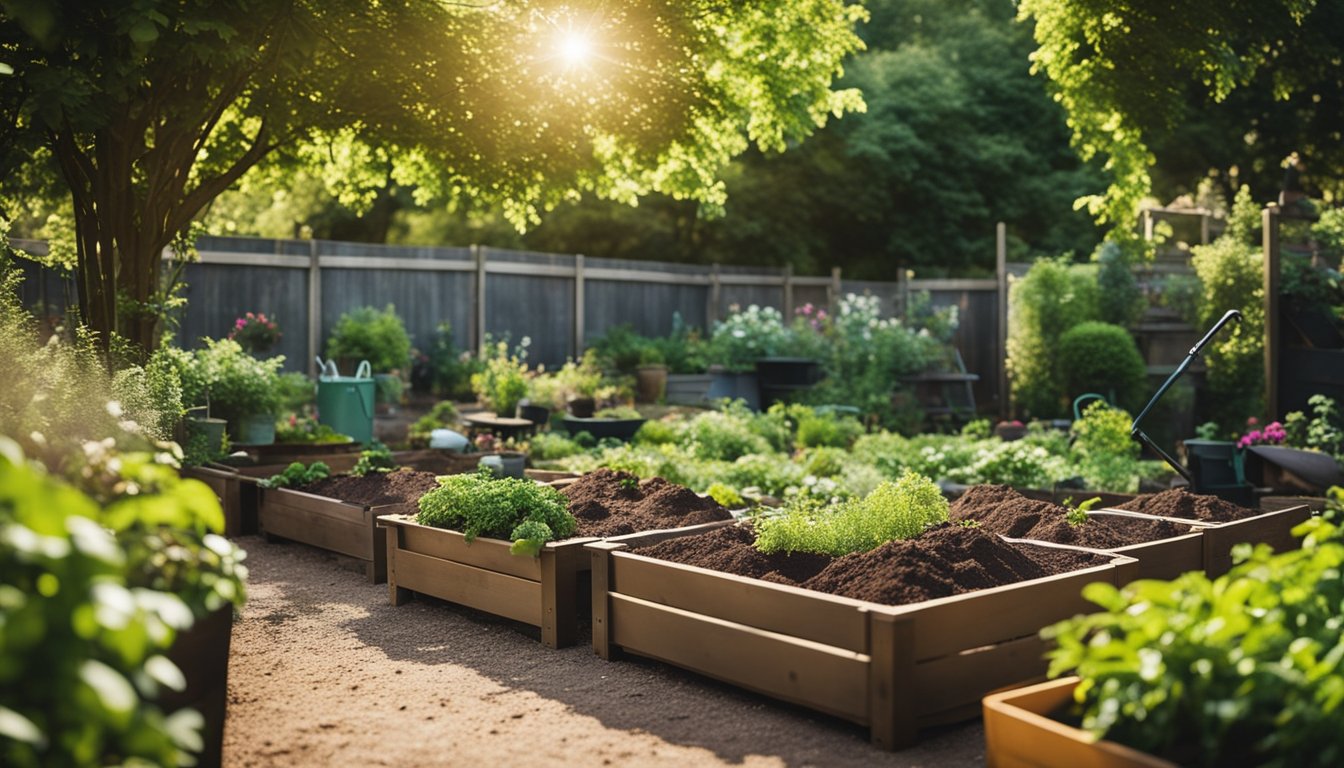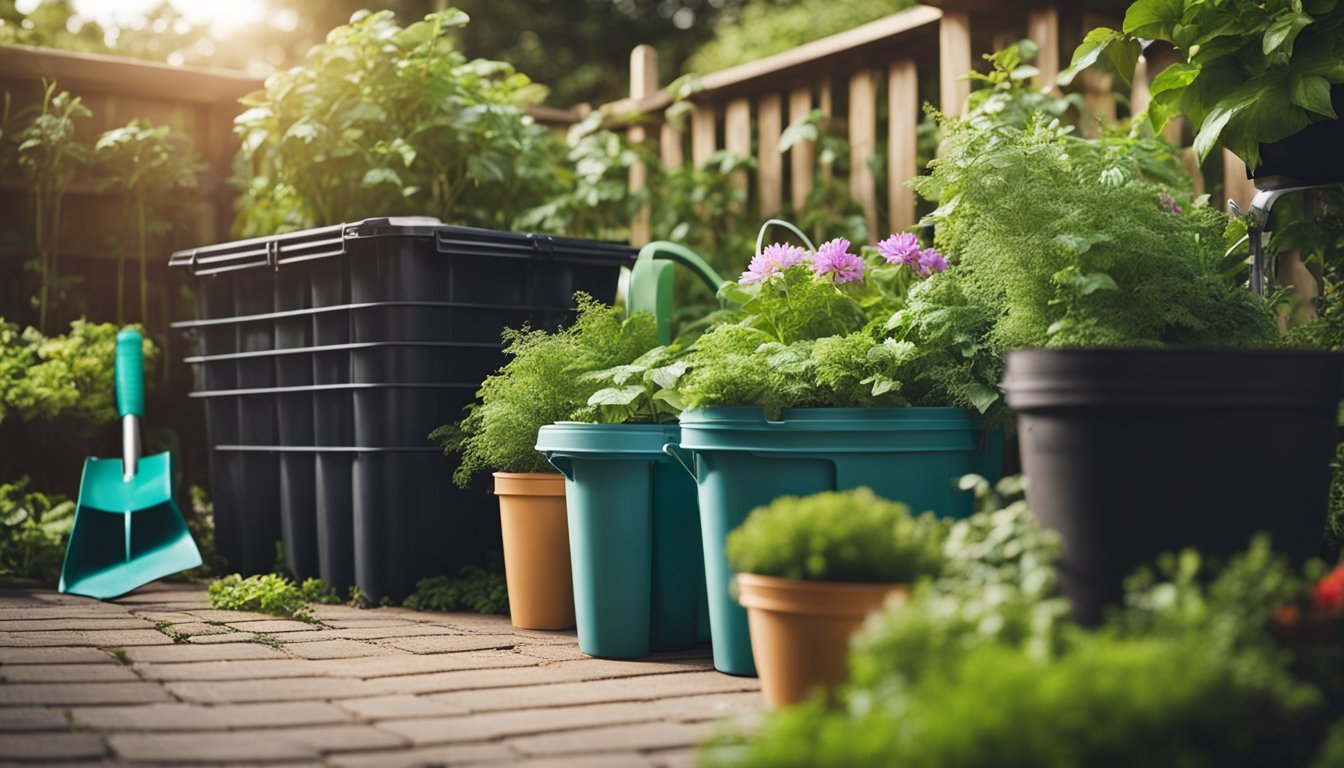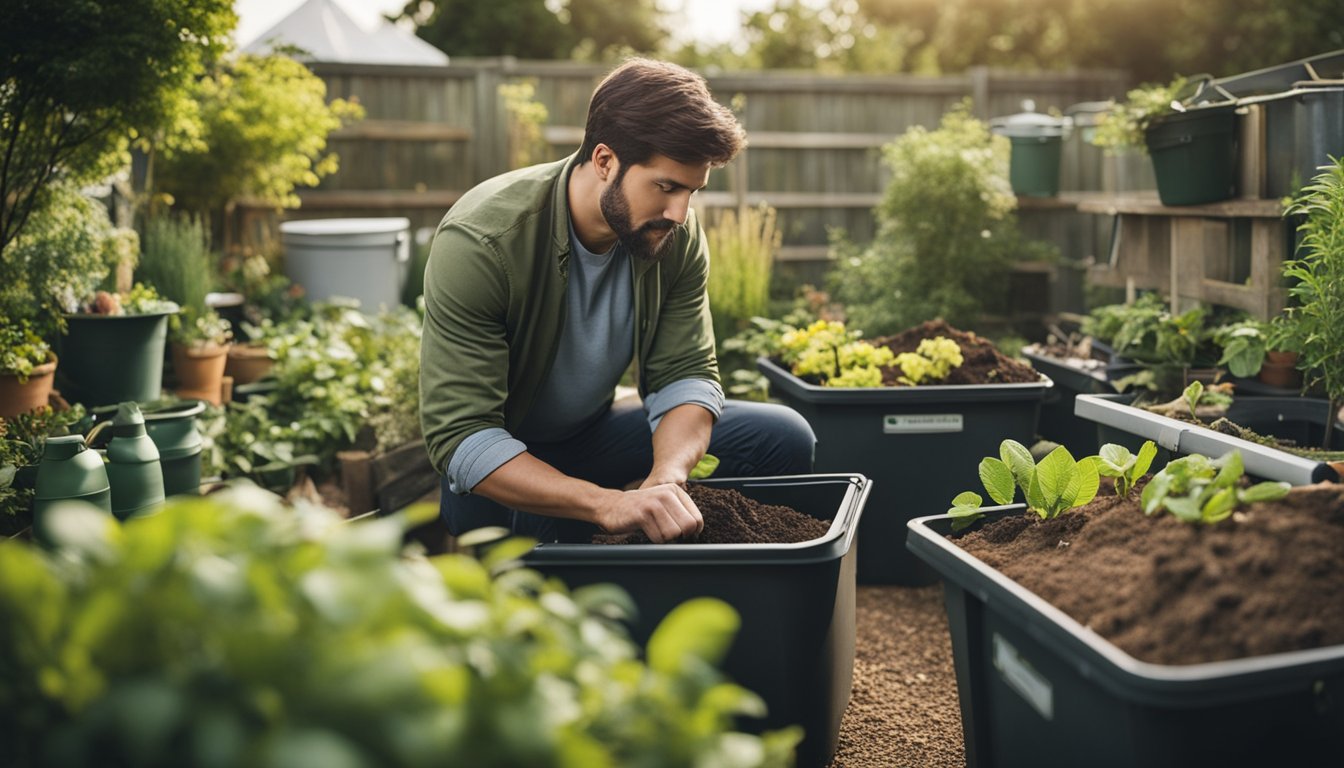Late updated: 09 Feb 2025 08:02
Written by: Sarah Hollister
Choosing the Right Compost Bin for Your Garden: Essential Factors to Consider
Embarking on a composting journey is a rewarding path towards sustainable gardening. With numerous options available, selecting the perfect compost bin can seem daunting, but it is essential for effective composting. Choosing the right compost bin requires careful consideration of factors like garden size, available space, and intended composting volume. By selecting a bin that suits our specific needs, we can efficiently transform kitchen and garden waste into a valuable resource.

Finding the best compost bin starts with understanding composting fundamentals. It involves balancing materials high in carbon, like dry leaves, with those rich in nitrogen, such as food scraps. This practice not only helps in reducing waste but also nourishes our gardens. We should assess how close the compost bin is to resources like a garden hose, as ease of access can influence the composting process.
Practical considerations make a significant difference in our composting success. It's important to tailor bin selection to our unique circumstances, whether that means opting for a homemade solution or purchasing a ready-made one. By doing so, we empower ourselves to craft a composting environment that supports a thriving garden.
Key Takeaways
- A suitable compost bin choice leads to efficient waste transformation.
- Understanding composting essentials is key to successful gardening.
- Consider garden size and bin accessibility when selecting a bin.
Understanding Composting Fundamentals

To effectively choose the right compost bin for your garden, it's essential to grasp the basics of composting. We will explore the science behind composting, various types of compost bins, and how to select the right size and material for your needs.
The Science of Composting
Composting is the biological decomposition of organic matter under controlled conditions. Microorganisms play a vital role by breaking down food and yard waste into nutrient-rich compost. Adequate aeration is crucial, as these organisms require oxygen to thrive and accelerate the decomposition process.
Maintaining the right balance of carbon-rich (brown) and nitrogen-rich (green) materials helps optimise the composting process. Brown materials like dry leaves and shredded paper provide carbon, while green materials like grass clippings and kitchen scraps add nitrogen. Regularly turning the compost pile ensures even aeration and accelerates the breakdown of materials.
Types of Compost Bins
Selecting the right compost bin depends on our specific composting needs. Popular options include tumblers, worm bins, and stationary bins. Tumblers allow easy turning, enhancing aeration and speeding up decomposition, making them suitable for smaller volumes of organic waste.
Worm bins, or vermicomposting systems, utilise worms to break down food waste efficiently and are ideal for indoor or small-space composting. Meanwhile, stationary bins are great for larger amounts of yard waste and are typically available in plastic or wooden varieties. Each type has its pros and cons, and choosing depends on factors like available space and waste volume.
Selecting the Appropriate Size and Material
Understanding the correct size and material for your compost bin ensures a successful composting experience. The volume of organic waste we generate influences the size we should opt for. Smaller bins suit minimal household waste, whereas larger gardens might require a substantial capacity bin.
The material of the compost bin affects its durability and insulation properties. Plastic compost bins offer weather resistance and ease of maintenance, while wooden compost bins provide natural insulation, aiding the composting process, especially in cooler climates. Selecting a well-ventilated bin promotes aeration, preventing unpleasant odours and aiding decomposition. Careful consideration of these factors will help us make an informed choice.
Practical Considerations for Compost Bin Selection
When selecting a compost bin for our garden, we need to evaluate factors like accessibility, cost, and environmental impact. These key considerations will ensure our composting efforts are efficient and sustainable in the long run.
Accessibility and Ease of Use
One important consideration is the location and accessibility of the compost bin. If we're planning to add kitchen scraps regularly, placing the bin close to the kitchen or garden makes it more convenient.
Choosing between stationary compost bins or tumblers depends on how much physical effort we’re willing to put into turning the compost. Tumbler compost bins can make mixing easier, as they often come with a crank handle, while stationary bins might require manual turning.
Accessibility also involves considering seasonal changes. A bin that’s accessible year-round, even during wet conditions, ensures continuous composting. If the plan includes indoor composting, options like portable compost bins or indoor composters suit homes with limited outdoor space.
Budget and Cost-Effectiveness
Our budget will heavily influence the type of compost bin we choose. DIY compost bins can be cost-effective solutions for those with a tight budget. Materials like wood, wire, or old pallets can often be repurposed at a low cost.
For those who can invest a bit more, tumbler compost bins offer convenience but come at a higher price. It's vital to weigh the upfront costs against long-term benefits such as reduced landfill waste and lower greenhouse gas emissions, as nutrient-rich compost can reduce the need for store-bought fertilisers.
Additionally, considering the volume of organic material our household generates helps us decide the size and type of bin. Larger households might benefit from bigger stationary bins, while smaller homes can opt for compact designs.
Environmental Benefits and Sustainability
From an environmental perspective, using a compost bin reduces greenhouse gas emissions by diverting food scraps and yard waste from landfills. Composting not only decreases landfill waste but produces nutrient-rich compost that enhances soil health and fertility.
For those interested in minimising their carbon footprint, options like vermicomposting introduce composting worms to accelerate the process. Using materials that come from sustainable sources or are biodegradable adds to the eco-friendliness of our composting practices.
By selecting composting materials that naturally break down, we support a cycle that returns valuable nutrients to the soil, promoting a healthy garden ecosystem.
Frequently Asked Questions

Choosing the right compost bin involves understanding your garden's needs, the suitable materials, and available space. We’ll address common queries about size, construction, and how indoor kitchen composting can complement your efforts.
What should I consider when selecting a compost bin for my home garden?
When choosing a compost bin, we should consider the size of our garden, the volume of waste we generate, and our composting needs. The bin should fit our space and allow for easy turning and aeration. Durability and resistance to pests are also crucial factors, along with budget and aesthetic appeal.
Which materials are most suitable for garden compost bins?
Materials commonly used include wood, plastic, and metal. Wood bins blend naturally with garden environments but may require treatment to prevent decay. Plastic bins are lightweight and resistant to weather conditions. Metal bins are sturdy but can be prone to rust. Our choice often depends on the specific conditions and aesthetic preferences of our garden.
How do I determine the appropriate size for a compost bin in a small garden?
In a small garden, we should opt for compact compost bins that maximise space efficiency without compromising capacity. It's essential to estimate the volume of organic waste generated weekly to ensure the bin can accommodate it. Modular systems allow for expansion, making them a flexible choice for varying waste volumes.
Can I construct my own compost bin, and if so, what are the essentials to know?
Building our compost bin can be cost-effective and tailored to specific needs. Essential considerations include using rot-resistant materials, ensuring ample aeration, and maintaining easy access for turning the compost. We should ensure enough drainage to prevent waterlogging and consider the type of materials commonly composted in our garden.
What are the benefits of a kitchen compost bin, and how does it fit into garden composting?
Kitchen compost bins allow us to collect organic waste conveniently inside our home. They help in reducing household waste and provide a steady supply of material for our garden compost bin. Designed with odour control features, they integrate seamlessly with outdoor bins, acting as a preliminary stage in the composting process.
Are there advantages to using a municipal-provided compost bin over purchasing my own?
Municipal bins often come with guidance and support on composting practices. They can be cost-effective as some councils provide them at a reduced rate or even free of charge. We also contribute to collective efforts in reducing landfill waste. However, personal bins allow for tailored solutions to meet our specific requirements and preferences.
